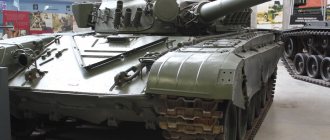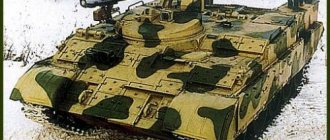Before the appearance of regular troops, the outcome of the battle in defense of a city, or any other village, was decided by militia soldiers, who often entered the battlefield with weapons adapted for combat missions. These were converted scythes and sickles, long knives and bows of hunters.
But the most terrible weapon even then was the war hammer - the weapon of blacksmiths. These skilled men usually possessed considerable physical strength and excellent orientation; the culmination of the battle was the terrible and precise blows of war hammers, crumbling the armor and bones of their enemies.
The history of the war hammer
These weapons appeared simultaneously with the advent of metallurgy; even then the first blacksmiths went into battle with heavy sledgehammers, which in weight and destructive power were quite comparable to maces. But, unlike other weapons of the army, the war hammer was usually pointed at the target by the steady and strong hand of a trained blacksmith.
In addition to physical strength, the blacksmiths also had excellent spatial orientation, high endurance and, of course, they knew very well the weak points of other weapons. For this reason, a warrior with a hammer could easily resist a professional warrior or mercenary.
This also affected mythology; it was not for nothing that the strongest of the gods received this particular item as a weapon.
The hammer of Thor is known - Mjolnir, forged in Etunheim by the dwarves Sindri and Brok, as a result of a dispute with Loki, the god of fun and deceit.
Thanks to his pranks, Mjolnir received a short handle and enormous weight, which, however, did not prevent it from being used for combat purposes. Thor, the owner of the hammer, used it as a throwing weapon; the blow of Mjolnir caused thunder and lightning.
In fact, an entire mythological system was built just around this weapon in Scandinavia, but at the same time, the Vikings themselves used war hammers quite rarely. This was largely due to the specifics of its application.
However, the war hammer was known not only in Scandinavia; both the Greeks and the Russians fought with it. Saxon blacksmiths went into battle with him and forged the eastern lands. Over the years, these weapons have evolved.
Having assessed its effectiveness as a crushing weapon, gunsmiths began to combine it with cutting and piercing weapons. This is how its varieties appeared:
- long shaft hammer;
- short hammer;
- combined weapon.
If the first two differed only in the length of the shaft, then a combined weapon, such as a firestock, for example, could have a striking surface and an ax-shaped appendage, while at the same time a ballistic spring-loaded tip was hidden in its shaft.
His task was to suddenly lengthen the warhead of the weapon or knock the weapon out of the enemy’s hand. Such weapons were multifunctional, but at the same time difficult to use.
A variety of long-shaft hammers were poleaxes, a hybrid of a hammer and a halberd, having both a piercing tip and a chopping and striking head.
On some war hammers, the striking surface extended into a slightly curved beak, the task of which was to pierce forged armor and chain mail.
Of interest is the so-called Lucerne hammer, actually a halberd, instead of the chopping part of which there was an elongated beak, and on the butt there was a striking part, in the form of a crown with pointed teeth.
War hammers of the Middle Ages generally amaze the imagination of blacksmiths in their quest to obtain the ideal weapon.
Short-shafted weapons were considered to be coins and klevets, small light hammers with a crow's beak and a striker on the back of the butt.
It was these variants of weapons that became widespread in Rus'. A variant of the klevet known as driven, was quite widespread in India. Some variants of these weapons already resemble a mace or morgenstein, due to the beaks and axes located in a circle.
With the advent of Milanese armor, war hammers gradually disappeared from the scene, finally disappearing with the appearance of firearms. The war hammer, for all its versatility, was inferior in combat characteristics to chopping and piercing long-shaft weapons. Nowadays the war hammer is used only in computer games.
Weapon parameters
The damage of the war hammer depends only on Strength, so we strongly recommend that you focus on collecting equipment with this parameter. A good secondary characteristic for the owner of a war hammer is Constitution, but only strength affects the damage the hero deals. Investing 50 points in strength will increase the damage of light attacks by 5%, and 100 points will increase the effectiveness of heavy attacks by 10%. By investing 300 points in Strength, you will gain resistance to interruptions when dealing damage with heavy/light attacks, which will provide a lot of advantages when fighting a group of enemies.
Device and principle of operation
The war hammer is a bludgeoning weapon. At different times, the shape and functional features of its striking part changed. But the device itself remained unchanged:
- shaft - a handle made of hard wood or metal;
- lanyard, leather or fabric loop on the handle, designed to thread your hand through it;
- the heel, the top of the handle, could have the shape of a stiletto, a faceted dagger for finishing off an enemy;
- the impact part, its shape depended on the type of hammer and the imagination of the blacksmith.
The impact part of the hammer could be either a purely impact part, an ordinary forge hammer made of metal, or with additional combat devices. Axes-hammers, axes-hammer-beaks and other configurations are known.
Quite often, a pike tip was welded onto the top of the striking part. In this case, a warrior armed with a long-shafted hammer could stand in the same ranks with the halberdiers.
Short-shafted hammers - klevtsy, mints and driven hammers - were used mainly as additional weapons in individual combat. Their main task is to penetrate armor or stun the enemy.
Combination weapons appeared much later; as a rule, these war hammers were used individually for self-defense or in cavalry formation.
But most historians agree that these weapons were intended for travelers and merchants.
The ceremonial examples of these weapons were richly decorated, the beaks and other parts of the warhead were decorated with engraving and gilding. The handle was braided with leather strips or metal wire. The weight of the war hammer reached 2 kg. Short shaft weapon about 1.2-1.5 kg.
general information
The war hammer belongs to the “Two-handed weapon” category and directly depends on the “Strength” stat. It deals bashing damage with basic attacks and most abilities. The War Hammer does a great job of holding a group of enemies while dealing decent damage to them.
This weapon has four different skills, each providing a different type of control, and moderate self-healing. In addition, you will be able to deal massive damage to targets with the Tank role through the Rend debuff from the Armor Breaker ability and the Sundering Shockwave perk.
Use in combat
In its development, the war hammer has gone through a rather long and difficult path. From the weapons of a militia blacksmith, to an insignia, for example, the ceremonial war hammer of the commander-in-chief.
During evolution, he himself also changed; from an ordinary blacksmith's sledgehammer, a polex and a mint grew. The handle was lengthened. Additional striking elements appeared on the striker - pommels, spikes, axes and beaks.
A two-handed war hammer in tight formation perfectly fulfilled its role even if the attacking side had only light armor or the complete absence of it. Leather armor and light chain mail could not protect their owners from heavy blows, but soon plate cavalry entered the scene.
The forged army could only be resisted by a formation of spearmen armed with long-pole weapons. The hammer, like a weapon, abruptly lost its position.
He received a second birth, appearing in the form of a polex, a combined striker on a long shaft.
The infantry used the long hammer as a halberd, in this sense it practically lost its shock role, receiving in return the role of a pike, with a reinforced warhead.
Such short-shafted weapons were used everywhere, both as a sign of power (in the Italian cavalry of the 15th century) and as a military weapon (in the noble militia), under Peter the Great in Rus'. The Indian driven (XVI...XIX centuries) played the role of a second-hand weapon when chopping with sabers.
But everything changed with the advent of forged armor and subsequently firearms. Bulky and heavy hammers quickly left the stage, giving way to lighter and more effective sabers and axes, as well as armor and then sabers. Of the armor, only the helmet remained, modified to a helmet.
Spreading
The war hammer was most widely used by horsemen starting in the 13th century. Its rapid spread was facilitated by the appearance of reliable knightly armor and armor. Swords, maces, axes and any other weapons used in those days for close combat were no longer effective against them. All of them turned out to be ineffective. That is why more and more new variants of the same war hammer began to appear. Its varieties include any pole weapon with a knob, which on one side looks like a hammer, and on the other can have the appearance of a straight or slightly curved blade, beak, faceted spike, etc.
The very name “hammer” suggests the presence of at least one of the above elements of the combat head. The weapon retains this name even when there is no actual hammer on it. The most common was considered a hammer, which had an upward point and, in addition to it, short spikes, which were often located directly on the striking part of the butt or on the side of it. The beaks could pierce armor plates or tear chain mail. The hammer was used to stun the enemy or deform his armor.
Using a bug with a potion to increase the “Recovery” skill
If you like to use various in-game errors, then you probably know about the bug with alchemical potions. Do not know? Then we will tell you about it. When you combine enchantment with alchemy, you can turn your main character into a true immortal god. All you need to do is follow these instructions:
- Learn the skill enhancement enchantment: alchemy and enchant any set of armor with it;
- Find a set of armor with the characteristics that your warrior hero needs;
- Equip armor with alchemy enchantments;
- Stock up on the following crafting ingredients: salt, Cyrodilic shoveltail and Abessinian perch;
- Collect at least two of the following crafting materials: fierce mushroom, spriggan sap, glowing mushroom, saber tooth;
- Make a potion for Skill Enhancement: Recovery;
- Drink the potion;
- Remove equipment with alchemy enchantments;
- Re-enchant the equipment and equip it again;
- Repeat the previous 4 steps until the alchemy enhancement enchantment reaches huge numbers;
- Make a potion for Skill Upgrade: Blacksmithing;
- Drink the potion;
- Improve your set of equipment with characteristics useful for your hero.
This way you will receive a set of armor with incredibly high parameters. Yes, this is not entirely fair, but in fairness it should be said that this bug is not a bug as such, because the Skyrim developers themselves do not call it a bug. But whether to use it or not is up to you. If you want to play without bugs, just skip this step.
In addition to the buggy potion to increase the “Restoration” skill, there are many mods that allow you to get enhanced potions without all this “dancing with tambourines.” Therefore, if you do not want to complicate the game for yourself, use them.
TOMAHAWK
Tomahawk
Initially, the weapon has chopping and impact properties. It was significantly developed by European blacksmiths.
Diplomatic tomahawks, which retained the cutting ability, were considered a separate type. They had more of an aesthetic quality. They were decorated with various types of engravings and presented as gifts to leaders. The presentation of such a tomahawk was considered a sign of peaceful intentions.
When they first appeared, they only called clubs used in battle and clubs. After some time, this term began to be used to describe everything that looked like a metal hatchet.
The warhead had various forms: in the form of an ax, blade, spear. The modifications did not spare the butt either. It could be presented in the form of a smoking container, in the form of a hammer. An addition in the form of a spike, a curve, a point, or a hook was practiced. All-metal tomahawks were considered the most modern.
The Indians quickly mastered this type of weapon and successfully used it both in close combat and when thrown over a considerable distance. The tomahawk found its use in such battles as: the North-South Civil War, the World War of 1914-1918, and the Vietnam War.
Nowadays, certain modifications are used in some army units, as well as by artists.
PEAK
Pike
The pike was a weapon that served a defensive function. Used by infantry in defense against cavalry. In very rare cases, its use against infantry has been observed. The appearance of the pike was noticed around the twelfth century among the Scots. In the fifteenth century, this type of weapon was adopted by the Germans and the Swiss.
It reaches quite a long length, exceeding the size of a spear. The damage was done by the blade. The average weight varied from four to five kilograms. With the advent of firearms, the pike lost its relevance. But in rare cases, equipping troops with a pike can be traced back to the Second World War.
Eastern analogues
Klevtsy with short shafts were used not only in European armies, but also in the East. For example, in India a similar war hammer was called a fakir's staff or driven, in Afghanistan and Pakistan - lohar, in Persia - tabar. This weapon was very similar to the European one, because it had the same division of the hammer into four spikes. Just like the Lucernehammer.
It must be said that the Klevets lasted much longer in the East than in Europe, since they were in great demand both among the military and the civilian population. They were especially popular in the Indo-Persian region and even had the same name - “crow’s beak”. Combined weapons were also made in India. There were also analogues in China and Japan.
The fastest
Simply put, it is a deadly and, at the same time, elegant weapon.
Since this is a museum piece, I limited myself to trying out just a few blocking positions and slow attacking moves, but even that was enough to get an idea of how balanced the weapon is.
For lack of a better analogy, I can say that you just want to use this war hammer and hit something/someone with it.
I also tried the bill and the halberd. Of these three types of weapons, the Polex turned out to be the most convenient to use, the fastest and most responsive to movement. Of course, it was also the shortest.
And what struck me most, of course, was the excellent balance between the heaviness of the weapon and the dexterity of its use.
All this made me look at this weapon in a new way and appreciate its qualities. Now I understand why polexes were so popular in their time.
Stay with us, and you definitely won’t miss them!
The article “A Poleaxe from the Higgins Armory Museum” by Alexi Goranov was first published on the website myarmoury.com Translation into Russian - especially for - was carried out by Daria Savelyeva. The material is supplemented with illustrations.
This is a piercing weapon with a dagger-like blade, which is attached to the handle at a right angle, which allows you to strike with greater efficiency. A similar weapon - a war hammer - came into use in Europe, Persia and India due to the widespread use of armor and chain mail. The hammer had a small butt, which could be used to stun an enemy wearing a helmet, and a curved beak. In Rus' this weapon was called klevets. 1.
A wooden beak (essentially a mace with a point) from New Caledonia.
2.
"Crow's beak" of the Australian aborigines. The stone blade is fixed to a wooden handle using resin.
3.
Toki, the fighting adze of the New Zealand Maori.
The jade blade is secured to a carved handle with a cord. 4.
“Crow’s beak” of the Bronze Age, nicknamed “halberd” by archaeologists.
Found in Skane, Sweden. In a similar way, an ordinary dagger blade was often mounted on a bronze hilt. It is believed that some examples of such weapons had purely ritual significance. 5.
Driven, Indian "crow's beak".
Made of steel, handle plated with silver.
6.
Steel combat “crow’s beak” from the Afghan-Pakistani border, decorated with brass and silver.
7.
Kama yari, Japanese "crow's beak". If a cannonball was attached to the handle with a chain, the weapon became defensive and was called kusarigama. "Crow's beak" from India (right). Collectors call such specimens “crown beak.” Fine examples of these weapons come from India and Persia, where they were used to pierce chain mail.
Lucernhammer
This is a type of bladed weapon that appeared in Switzerland around the end of the 15th century. It was in service with infantrymen of many European countries until the end of the 17th century. This medieval weapon was a chained shaft up to 2 m long, at one end of which there was a warhead in the form of a pointed pike, and at its base there was a hammer. Usually it was made double-sided. The impact toothed part of the hammer served to stun the enemy, and the hook part resembled a sharp beak. Considering its purpose, we can say that it belonged to a polearm with shock-crushing action.
It is believed that the reason for the appearance of the Lucerne hammer was the hostilities that took place between the Swiss infantry and the German cavalry. The fact is that the riders had fairly high-quality armor, against which traditional halberds were powerless, since they were not able to penetrate the iron shell of the rider. It was then that the need arose for a new weapon that could penetrate enemy armor with relative ease. As for the pike, it helped the infantrymen effectively repel enemy cavalry attacks. The Lucerne hammer turned out to be so good that over time it managed to completely replace halberds.
Examples of realistic use[edit]
Literatureedit
- Charity Carpenter from The Dresden Files on an operation to save her daughter
Two books later, Charity, again protecting her children, broke the now Summer Fae's skull with an ordinary carpenter's hammer.from the heart of the Kingdom of Winter she took a completely adequate war hammer, forged by her, and as a backup weapon (she had a sword as her main one). She used a hammer to knock down the ice gate into Queen Mab's garden (the hammer, however, also exploded).
Video gamesedit
- Skyrim: Two-handed hammers and maces may look fussy and have slightly
oversized striking parts, but are generally realistic. The only things that stand out from the general heap are the dragon bone hammer (a stupidly healthy dragon bone on the handle - more of a club than a hammer), the stalhrim hammer (a piece of magical ice that is stronger than steel - and a painfully large piece), and the Daedric will be a bit wide (although it has narrow and sharp striking parts). Of the maces, the only one that is excessively wide is the Stalhrim one. Well, the unique mace of Molag Bal is actually something different, an example from a different category. - Mount & Blade - zigzag: all kinds of maces and knives are presented here quite realistically (in some mods the knives can even be rotated to hit with both the beak and the blunt end), but the Rodoks also have real HAMMERS lying around, ranging from a wooden mallet to a metal one with a sledgehammer. The weapon is quite specific: a blow from above even pierces a shield and, although this is a slow weapon, the features of the combat system allow them to feint and spin blows, making it possible to use it effectively even in duels. Hammers are also realistically good for defense during sieges - hitting the dome of someone who is climbing the stairs: there is nowhere to dodge, it will not be possible to close.
- Dark Souls - although this game is famous for various hefty weapons, weapons of the “ordinary hammers” class are quite realistic and quite varied: here there are maces, and six-fingers, and a knives, and just clubs, and hammers (worker and blacksmith) on a long handle.
- Fable: boasts very correct peckers. Is that the “beak” in the game is presented exclusively in a sharp form, while in life there were also options with a “blunt” beak (instead of a point, the weapon ended in a small flat surface that perfectly crushed chain mail).
- Samurai Warriors 2 - the big guy Shimazu Yoshihiro is armed with a huge wooden hammer for threshing rice.
- Darkest Dungeon - the plunderer swings a pickaxe, and real war hammers ended up looking more like her. The pickaxe is modest in size (while there are some that are the size of awesomely large sledgehammers), but ignoring the armor resist is present.
Oslop
Oslop is a two-handed club, what is usually called the Great Club in games. This is a hefty club, usually shod and equipped with spikes, weighing 7-12 kilograms.
They arm with such a contraption those who have plenty of strength, but their combat skills are so-so. It is no coincidence that another form of this word is “dumb.” However, there have also been real pros with blind spots - let’s remember Hercules...
Oslop works differently than other weapons of this class. He simply demolishes his opponent as if he were knocking down a pin. It is possible - together with the horse. The momentum of a 10-kilogram log is wow.
By the way, this is almost the only weapon with which you can
perform those tricks that filmmakers love so much: twirl them in the air at shoulder level shouting: “Shit!” Why with him, and not with a sword or an ax? Because it won't get stuck!
Butt
After the loss of combat use of klevtsy, in Poland they began to issue special laws prohibiting the civilian population from carrying them, even in the form of canes and staves. Instead, another version of the hammer appeared - the butt or butt. It could easily be recognized by its iron, silver or brass knobs and beaks strongly bent towards the shaft, often wrapped in a ring. There were also specimens in which only the sharp tip was bent or they had an unusually shaped bend. In addition, the opposite end of the handle, up to 1 m long, was also bound in butts. It was mainly worn by
As you know, the butt was originally intended for self-defense, but over time it became clear that this weapon was more dangerous than the klevt. Previously, during a fight with the enemy, a saber could cut the face, head or arm, and the spilled blood would somehow calm down the heated warriors. Now, when a person was hit with a butt, no blood was visible. Therefore, the attacker could not immediately come to his senses and struck harder and harder over and over again, inflicting fatal injuries on his victim. It must be said that the Polish nobles who carried these weapons did not spare their subjects too much, and often punished them with beatings, and sometimes killed them.
Notes
- In Poland, klewiec- nadjak
or
nadziak
was used from the 16th century to the middle. XVII century - Mint, edged weapons // Encyclopedic Dictionary of Brockhaus and Efron: in 86 volumes (82 volumes and 4 additional). - St. Petersburg, 1890-1907.
- In Russian-language sources there is no consensus on the use of the names “chekan” and “klevets”. In literature, including archaeological literature, they are often used equally to refer to klevtsy, both ancient and medieval. The oldest bronze ones are also called halberds. There is even an unfounded idea to call straight klevtsy mints, and curved ones - klevtsy ( Gryaznov M.P.
, 1956). - Similar sagaris battle axes were used by the Scythians and Persians, and then by the Alans.
- There are other types of battle axes with spikes and hooks on the butts in Europe, Iran, India, and rarely in Japan ( maza-kari
). This also includes later pioneer and naval axes, American work axes (“American coins”) and tomahawks with spikes and hooks, as well as modern fireman’s axes. - Lethal force remains up to 10 m.
- From the Polish name for a small battle ax in the 16th century.
- In Poland, the broad concept of “butt” included all types of war hammers.
- Similar weapons have been known since Cimmerian times; there is a term for them in archeology - “bird-headed sceptres.” Erlikh V.R.
“Bird-headed” scepters of the Pre-Scythian period. New arguments for discussion // State Museum of the East. Material culture of the East. - M., 2005. - P. 151-162.
GLEFA
Glaive with a spike
The glaive is a slashing, piercing and cutting weapon. Used in Italian, Burgundian, and Saxon infantry. It was considered a universal weapon. It is customary to strike from top to bottom. It was both attacking and defensive.
There was a modification in which the glaive was equipped with additional damaging elements. The design of the glaive made it possible for its owner to disarm the enemy in a short period of time. There was also a place for a two-blade glaive, but it was not very practical in use.
This piercing weapon had a huge number of modifications to its tips. And if the base (shaft) received damage in battle, then the tip was quite a threat. There were also modifications with protective properties. So one of them had a spike on the tips, which made it possible to repel attacks from above. The disadvantages include the large size of the weapon, which made it easy for the enemy to disarm such a warrior.
In our time, the glaive remains in service with the Vatican Guards.
Description
In this report we will consider the topic of medieval weapons, namely polearms. This type of weapon belongs to the cold weapon subtype and was widely used in the Middle Ages. Let's study their most common types. Let us trace the path of their modernization from the time of invention to the present. Let's look at the strongest and weakest points. Let's look at weapons for women.
The design of the weapon is as follows: the warhead of the weapon is attached to a long stick. The long handle is called the shaft.
Polearms were typically made of wood. The modified shaft could have various combat metal parts on it, which served to cause damage and also increased the strength of the weapon.
Pole weapons became widespread in ancient times. It is generally accepted that initially it was an ordinary stick, without any additions. Initially, the use of such bladed weapons was widespread only in hunting. There are a huge number of types of this bladed weapon, this is due to the rapid development and spread of this type of weapon, due to the ease of its creation. This article will look at some types of impact weapons, battle axes.
Battle axes are also usually classified as short-shafted weapons.
HALBERD
Halberd
It is considered one of the legendary weapons. This type of weapon was invented in the thirteenth century. The design was very simple: they took a spear and attached an ax and a hook to it. The halberd was primarily used by infantry. Her weight varied from 2.5 to 6 kilograms. There were many different modifications of the halberd, ranging from different forms of an ax to types of hooks.
Such piercing and cutting weapons gained the greatest popularity in the fifteenth and sixteenth centuries among the mercenaries of Italy and Switzerland. It was used in land and sea battles.
Such piercing and cutting weapons had high performance in battle, and could easily pierce the enemy’s armor and pull him off his horse. However, it is worth noting that there were better piercing and cutting weapons than the halberd.
In 1605 it was first noticed in Russia, and in 1856 it was banned for use. It is still used in the Vatican to this day for various ceremonies.











